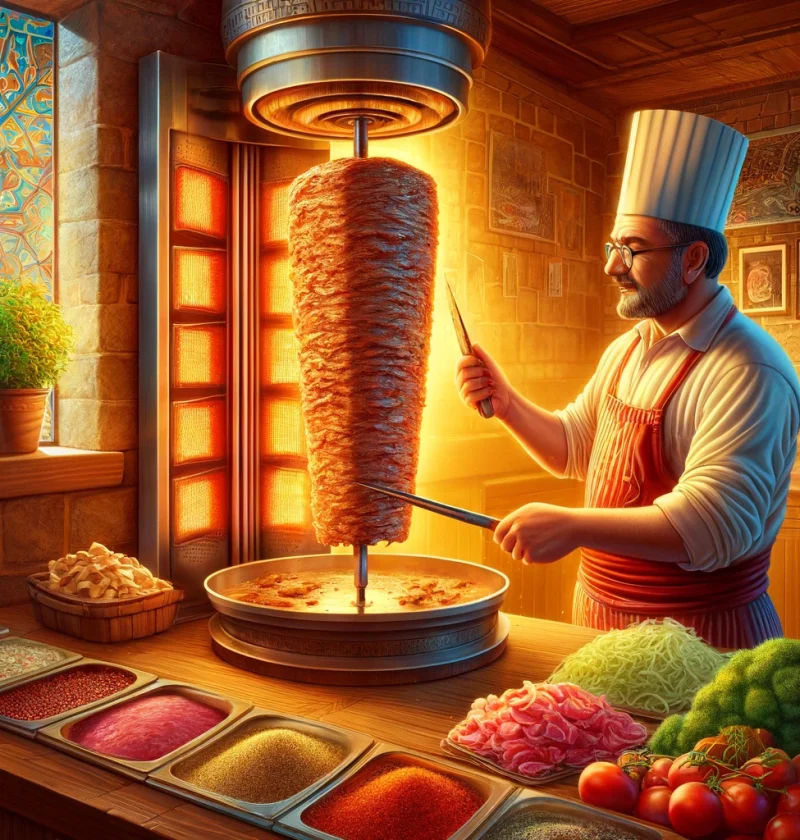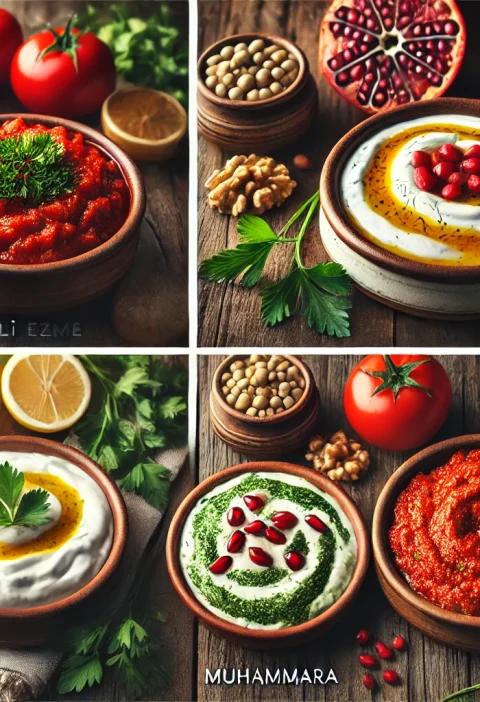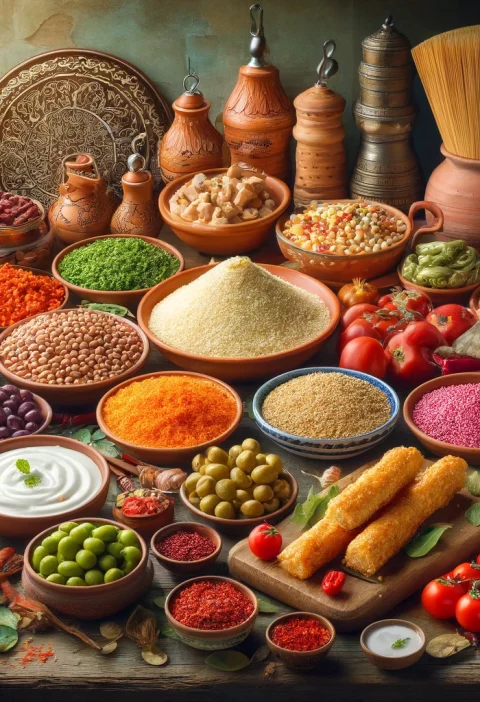Mastering the Art of Turkish Döner Kebab
Introduction to Döner Kebab
Döner kebab, a popular Turkish street food, has captured the hearts and palates of food enthusiasts worldwide. Known for its rich flavors and succulent textures, the döner kebab is a culinary icon that epitomizes Turkish food culture. In this comprehensive guide, we’ll delve into the authentic preparation of döner kebab, covering everything from selecting the right type of meat to the specific seasonings and cooking techniques that make it distinct.
What is Döner Kebab?
Historical Origins
Döner kebab, which means “rotating kebab” in Turkish, has its origins in 19th century Ottoman Turkey but was popularized in Istanbul in the early 20th century. Traditionally, it is made by stacking marinated meat on a vertical rotisserie, which slowly turns in front of a heat source.
Modern Popularity
Today, döner kebab is enjoyed around the globe, often served in bread as a sandwich or wrap, with a variety of accompaniments like vegetables and sauces.
Selecting the Right Meat
Type of Meat
Traditionally, döner is made with lamb, but variations include beef, chicken, and sometimes veal. The choice of meat affects the flavor and texture of the kebab significantly.
Preparing the Meat
The meat should be thinly sliced and then marinated to enhance its flavor and tenderness. This preparation is crucial for achieving the iconic taste and succulence of authentic döner kebab.
The Art of Marination
Key Ingredients in the Marinade
- Yogurt: Yogurt helps to tenderize the meat.
- Onions and Garlic: These add depth and sharpness.
- Spices: A blend of spices including cumin, paprika, salt, and pepper, along with regional spices like sumac and coriander, infuse the meat with traditional flavors.
Marination Time
Marinating the meat overnight will intensify the flavors and ensure that the meat cooks to be exceptionally tender.
Assembling the Kebab
Layering Techniques
The thinly sliced marinated meat is stacked tightly on a skewer. Fat layers are also added in between the meat slices to keep the kebab moist and flavorful while cooking.
The Importance of Fat
Fat not only adds flavor but also helps to maintain the juiciness of the meat as it cooks, which is key to a successful döner kebab.
Cooking Methods
The Vertical Rotisserie
- Rotation: The slow rotation cooks the meat evenly and keeps it juicy.
- Heat Source: Traditionally, charcoal is used, but modern döner kebabs may be cooked with gas or electric heat.
Alternative Cooking Methods
For those without access to a vertical rotisserie, a grill or oven can be used to mimic the effect, though the flavor profile may differ slightly.
Serving the Döner Kebab
Traditional Accompaniments
- Breads: Pita or lavash are the most common breads served with döner.
- Vegetables: Tomatoes, onions, lettuce, and cucumber offer freshness and crunch.
- Sauces: Tzatziki, hummus, or a red pepper sauce can enhance the flavor.
Presentation Tips
Slicing the meat directly off the skewer and serving it hot ensures the best flavor and texture, creating an authentic döner kebab experience.
Variations Across Regions
Differences in Spicing
While the basic spices are similar, regional variations might include more or less heat, additional herbs, or a variation in the types of meat used.
Side Dishes
Different regions may serve döner with varying side dishes, from simple salads to more complex rice dishes, reflecting local tastes and traditions.
Health Considerations
Nutritional Information
Döner kebab can be a balanced meal, containing protein, fats, and a variety of vitamins and minerals from the vegetables.
Dietary Adjustments
For those looking for healthier options, chicken or turkey can be used as leaner meat alternatives, and additional vegetables can increase the meal’s nutritional value.
Conclusion: Bringing Turkish Delight to Your Table
Understanding the complexities of making authentic Turkish döner kebab can transform your cooking experience and bring a taste of Turkey into your kitchen. By following the traditional methods and taking care with your ingredient selection and preparation, you can create a delicious, satisfying meal that pays homage to its rich cultural origins.



